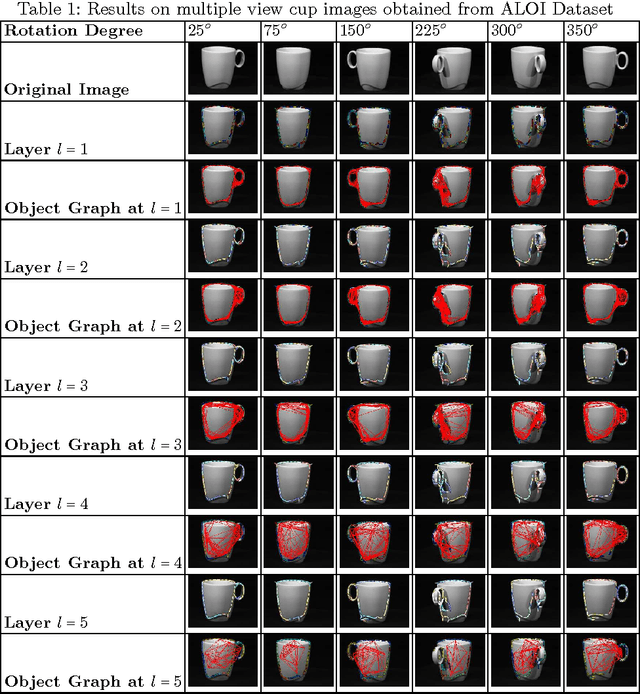A Graph Theoretic Approach for Object Shape Representation in Compositional Hierarchies Using a Hybrid Generative-Descriptive Model
Paper and Code
Jan 23, 2015



A graph theoretic approach is proposed for object shape representation in a hierarchical compositional architecture called Compositional Hierarchy of Parts (CHOP). In the proposed approach, vocabulary learning is performed using a hybrid generative-descriptive model. First, statistical relationships between parts are learned using a Minimum Conditional Entropy Clustering algorithm. Then, selection of descriptive parts is defined as a frequent subgraph discovery problem, and solved using a Minimum Description Length (MDL) principle. Finally, part compositions are constructed by compressing the internal data representation with discovered substructures. Shape representation and computational complexity properties of the proposed approach and algorithms are examined using six benchmark two-dimensional shape image datasets. Experiments show that CHOP can employ part shareability and indexing mechanisms for fast inference of part compositions using learned shape vocabularies. Additionally, CHOP provides better shape retrieval performance than the state-of-the-art shape retrieval methods.
 Add to Chrome
Add to Chrome Add to Firefox
Add to Firefox Add to Edge
Add to Edge